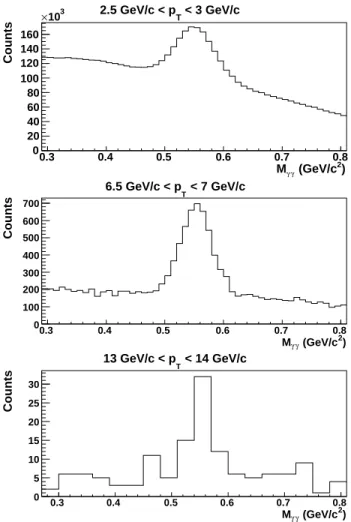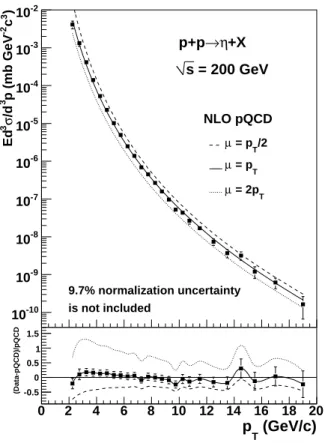Cross section and double helicity asymmetry for eta mesons and their comparison to neutral pion production in p+p collisions at sqrt(s)=200 GeV
Texte intégral
Figure




Documents relatifs
L’archive ouverte pluridisciplinaire HAL, est destinée au dépôt et à la diffusion de documents scientifiques de niveau recherche, publiés ou non, émanant des
We analyzed medusozoan mitochondrial genomes in a phylogenetic framework and propose the following hy- potheses for the evolution of linear mtDNA in this group: 1) a single origin
annual runoff taking into account available sparse historical data and information on climate and land-use changes.. (2011) extended this approach to model different components of the
According to the International Code of Zoological Nomenclature Article 16.4.2 the description of a new species must be accompanied by a statement of intent that the holotype will
In addition to acquisition of data for various species, recent improved phylogenetic understanding of NPFW taxa (e.g., Cruaud et al., 2011a, 2011b) has permitted an
in surface sediments, and the vertical decrease of Orga-P and Fe-P concentrations. In contrast to
Disentangling the relative impacts of climate change and human activities on fluvial sediment supply to the coast by the world’s large rivers: Pearl River Basin,
Using a numerical particle-based study, we argue that the presence of frictional interactions in granular solids alters the dynamics of flow by nucleating micro shear cracks